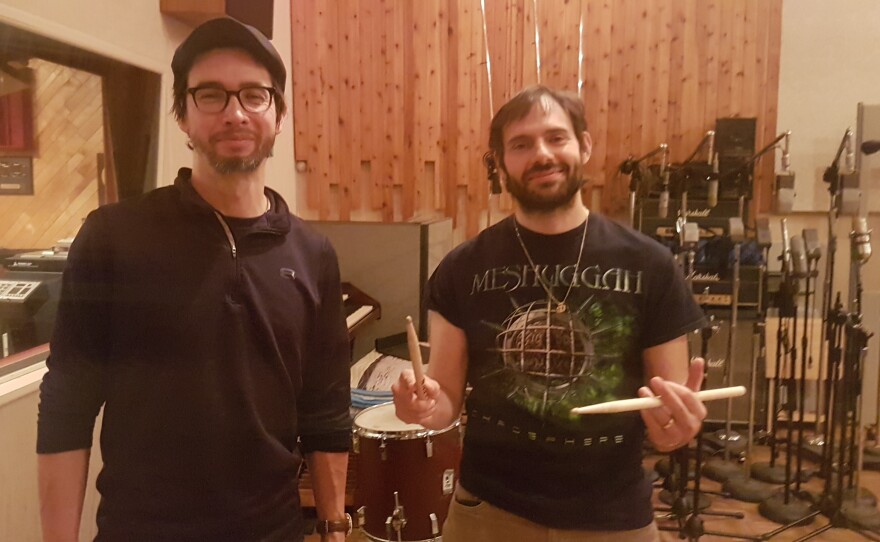Jazz has its hallowed locations, those rare spots where the music attains full dimension and history is repeatedly made. Right away one thinks of the great clubs, but a recording studio can just as readily serve such a function.
So when news spread of the imminent closure of Systems Two Recording Studios in Brooklyn, social media responses ran from incredulous to anguished. (“Holy hell,” composer Darcy James Argue, sharing the news, wrote on Twitter.)
The last session at Systems Two is this Friday, and after that there’ll be a considerable void: the room was handling as many as 200 sessions a year, generating results like Henry Threadgill’s recent Pulitzer Prize-winner In for a Penny, In for a Pound and many other standouts, including Terri Lyne Carrington’s Grammy-winning The Mosaic Project and Anthony Braxton’s sprawling opera Trillium E; the list goes on and on. Long renowned as a sonic temple for jazz, Systems Two also has a history outside of the genre — with, for instance, the metal bands Type O Negative, Biohazard and Overkill.
Along with shock over Systems Two’s closing, there has been an outpouring of love and appreciation for Joe and Nancy Marciano, the affable husband-and-wife team that owns the studio building (at 117 Ditmas Avenue) and is now cashing out and retiring after nearly 45 years in the business. (Mike Marciano, Joe’s younger brother, a veteran staff engineer, is scouting new locations with partners and will keep the Systems Two name.)
“I felt about them like Rollins and Trane and those guys thought about Rudy Van Gelder,” says Steve Coleman of the Marcianos. The alto saxophonist and MacArthur Fellow recorded On the Edge of Tomorrow at Systems Two in 1986, and remained loyal to the end. “It was a throwback to the mom-and-pop stores,” he adds. “They just did great work.”
A huge space, Systems Two could easily accommodate big bands led by Dafnis Prieto (Back to the Sunset) and Andrew Rathbun (Atwood Suites) as well as smaller units like the Miguel Zenón Quartet (Típico).
Pianist Kenny Barron recorded his 1995 trio classic Wanton Spirit at Systems Two, and many others since, including his latest, Concentric Circles. “The sound was always great, and the added benefit was that I could walk there,” Barron remarks. The nine-foot Steinway D, an acclaimed 1980 piece originally housed at Carnegie Hall, didn’t hurt.
Once viewed as a real-estate wasteland, the Kensington neighborhood around Systems Two is now red-hot, and after holding numerous offers at bay the Marcianos ultimately saw their moment.
“Everything came into play,” Joe explained. “I live out on Long Island, and traffic-wise it’s been brutal — it’s taking me almost two and a half hours each way. It just wears you down.” Still, he adds, the decision was difficult. “Being part of this community, meeting the people I’ve met, having so much fun and working with everyone — I’m really going to miss it.”
“It’s a lifestyle,” says Nancy Marciano. “We haven’t taken a vacation in... ever. It’s something you have to love, and we really did. It’s all we ever wanted to do.” Tearing up as she recounted System Two’s early days — in Sheepshead Bay, then at Avenue U and Nostrand and finally in its current location as of 1990 — Marciano takes heart in the fact that the new architect intends to preserve Systems Two’s interior, even retaining the peculiar woodwind-and-brass water sculpture at the stairs next to the control room. The new space will have “something to do with medical staffing,” she said.
I attended six or seven sessions at Systems Two while writing liner notes for the Criss Cross label in the mid-2000s. Label head Gerry Teekens would fly over from Holland and book a straight week of sessions — an album per day with the likes of Adam Rogers, Lage Lund, Mike Moreno, David Binney, David Kikoski and many others.
I’d ring the buzzer at that unmarked red door, half a block from the elevated F train, and enter a space that exuded character: the hologram of a young woman blowing a kiss as you walked down the hall; the extensive collection of Rubik’s Cubes and other impossible brain-teasers that Joe kept arrayed on a side table. The production was all Pro-Tools by then, a far cry from the studio’s humble eight-track beginnings in 1974.
In their unassuming, working-stiff way, the Marcianos created the conditions for jazz to flourish at the highest levels, in all its myriad manifestations. The Systems Two name and reputation for quality will likely live on, but there’ll be no replacing the house that Joe and Nancy built.





